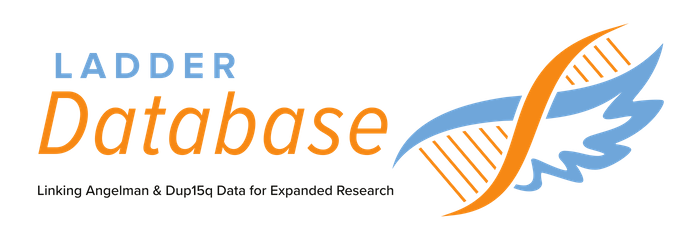Frequently Asked Questions and How-Tos
What is LADDER?
Linking Angelman and Dup15q Databases for Expanded Research (LADDER), is a database platform that links data on individuals living with Angelman or Dup15q syndromes. Data is collected from multiple resources, such as such as research studies, registries, caregiver reports, and clinic visits.
How is LADDER different from the Global Angelman Syndrome Registry?
The Global Angelman Syndrome Registry is an international program designed to identify and monitor the needs of individuals with Angelman and their families. The registry also collects information on the natural history of Angelman and informs families about eligibility for clinical trials. LADDER is working closely with the Global Angelman Syndrome Registry team in order to maximize data sharing and minimize burden for families.
How is LADDER different from the Angelman Syndrome Natural History Study?
The Angelman Syndrome Natural History Study is a federally funded research study with the goal of documenting how development, behavior, and medical concerns in children with Angelman syndrome change as they age. Data from the Angelman Natural History study is stored in LADDER and combined with clinic and registry data for those who have enrolled in LADDER.
Why should I enroll in LADDER?
By linking multiple sources of information LADDER can expand research and accelerate the development of interventions and treatments for individuals with Angelman or Dup15q and their families.
How long will it take?
It will take around 10-15 minutes to complete the forms needed to enroll in LADDER. The Clinical Needs Survey was designed so that you are only asked questions about topics relevant to the individual you are completing the questions about; therefore, depending on their unique history and needs these forms may take anywhere from 20-60 minutes to complete. The Clinical Needs Survey is completed (or updated) at least once a year. For individuals with Dup15q you will be asked to complete these around the individual’s birthday each year. For both Dup15q and Angelman Syndrome patients, the survey will also be sent to you ahead of a clinic visit. Once you have completed the survey the first time, subsequent completions will request updates to the previous version.
What if I have already participated in a research study or gone to a clinic?
LADDER has partnered with the Angelman Natural History Study, the 15q Clinical Research Network, the Angelman Syndrome Foundation, the Dup15q Alliance as well as several other research studies to collect and integrate datasets. The datasets that are shared with LADDER are de-identified, which means we do not know who the data is about. By signing up with LADDER, you provide consent for us to use the information you provide during enrollment (e.g. date of birth, information about the diagnosis) in order to identify and link the existing data in LADDER. So, for example, if you have previously participated in the AS Natural History study, registered with the ASF and gone to an AS clinic, we will be able to link the data from these different programs into one set of information on your child. The identifiable information you provide will not be shared outside of LADDER unless we have your explicit consent to share it.
What will happen with my data?
We will share de-identified information (which means it cannot be traced back to you or your family) from the LADDER database with approved researchers. These researchers will post summaries of ongoing research that are written for families to understand on our website when their research is complete.
I have more questions, who can I ask?
Send the team an email: ladder@rti.org
Ready to enroll and contribute to LADDER? Follow these simple steps!
